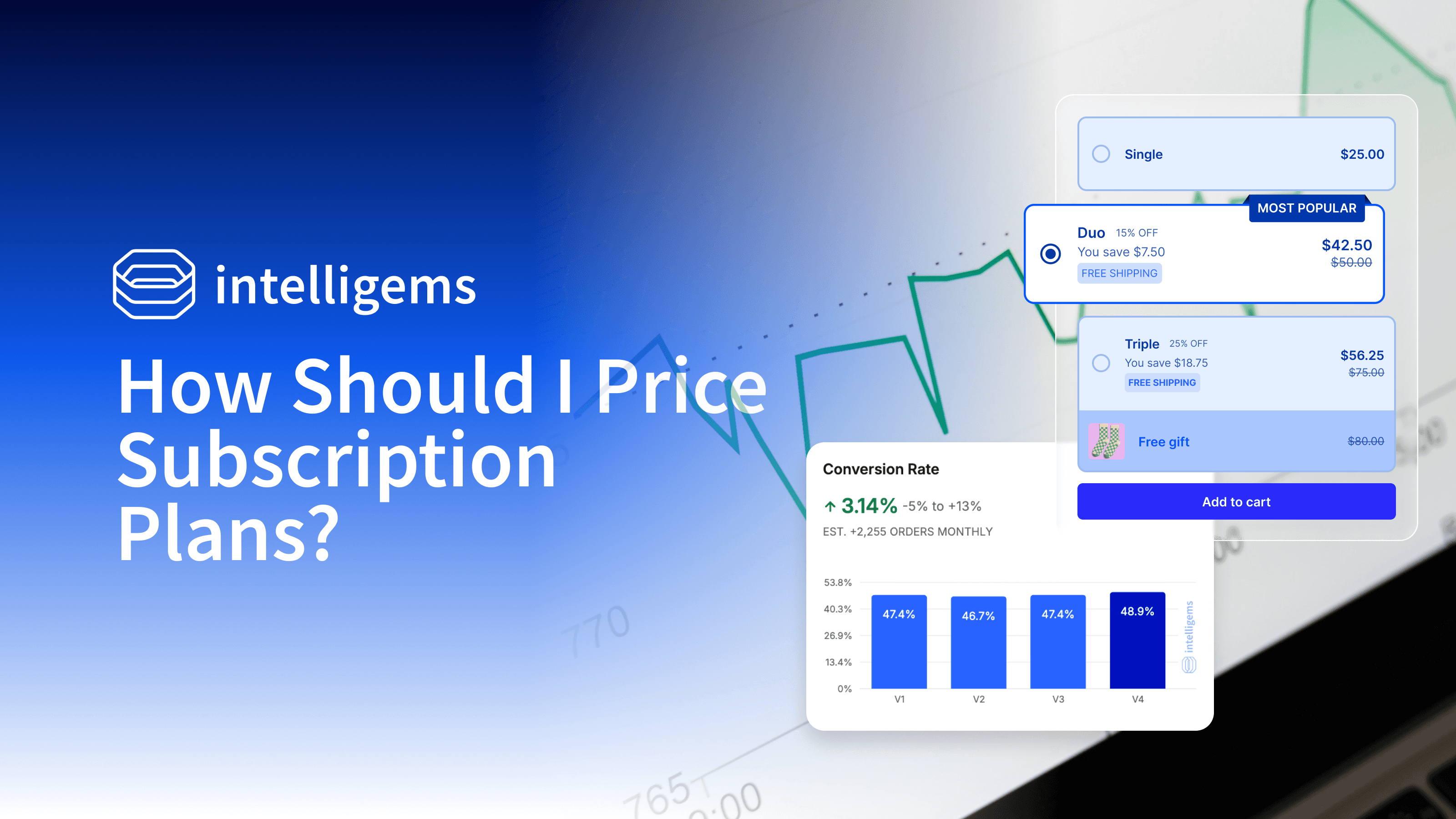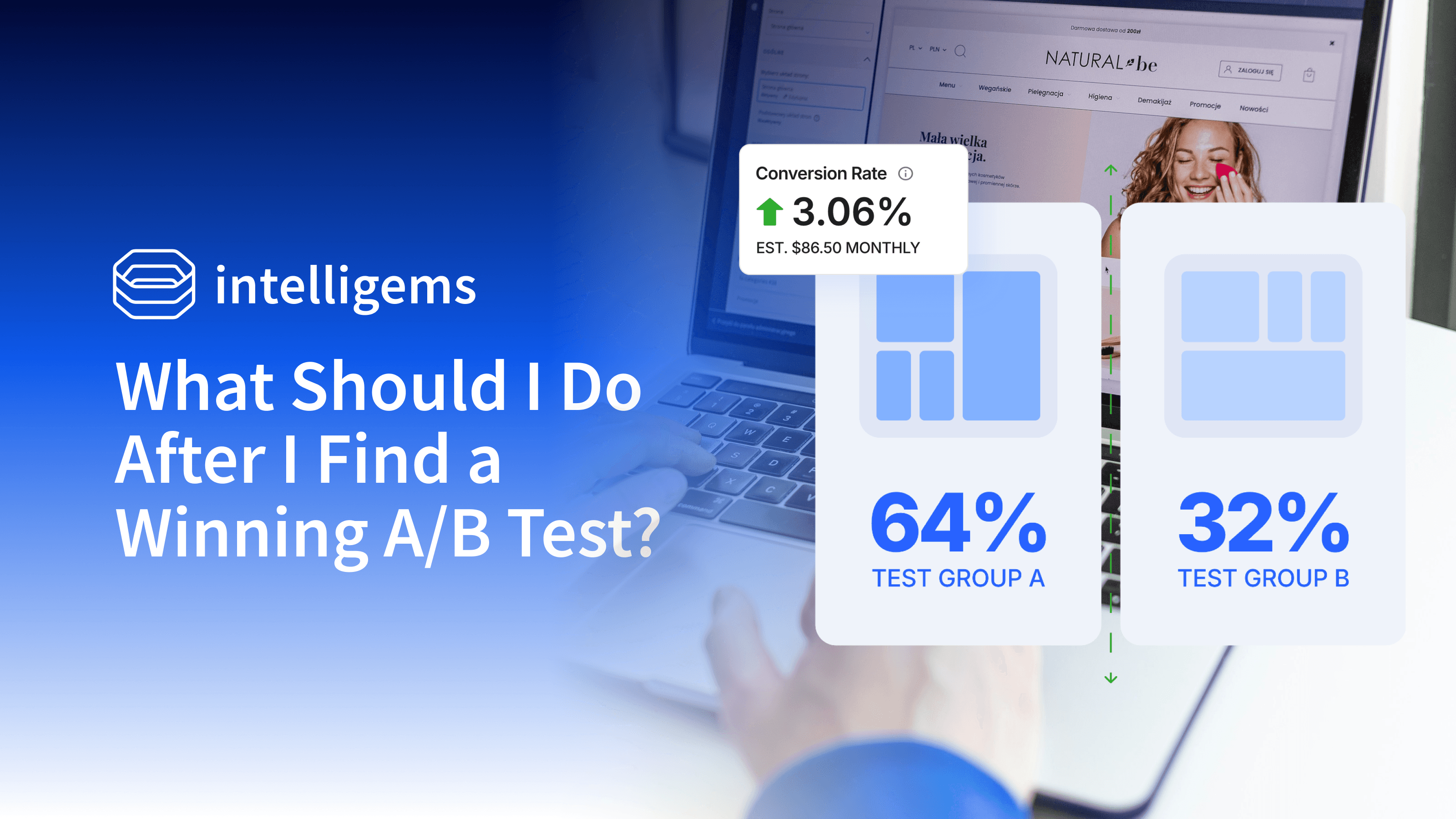Checkout Testing
Oct 29, 2025
How Do I Optimize My Checkout?
You optimized your product pages. You improved your cart. But your checkout?
You optimized your product pages. You improved your cart. But your checkout? Either it's completely default, or you set it up once years ago and never revisited it.
Most merchants approach checkout optimization by focusing on technical improvements: faster page loads, simplified forms, better mobile responsiveness. These absolutely matter. Others never revisit checkout at all once it's set up.
But there's another optimization lever that's often overlooked: the message you show customers at the moment of purchase. Testing different checkout content can reveal surprising insights about what builds trust with your specific audience—and unlike technical optimization, you can set up a test in 15 minutes.
The question isn't which approach is "best." It's which approach gives you the clearest signal about what your customers actually respond to. Let's explore why content testing might be the fastest path to better checkout conversion.
What Actually Optimizes Checkout Conversion?
Testing content often reveals faster wins than technical optimization alone
Ask most e-commerce experts about checkout optimization and they'll talk about page speed, simplified forms, mobile responsiveness, and removing unnecessary steps. Those help. They absolutely matter.
But here's what most brands miss: the message you show at checkout impacts conversion more than you think. One brand tests "Free Returns" against "30-Day Money-Back Guarantee." Same promise, different words. Conversion swings 7%. Another brand tests "4.8 stars from 10,000+ reviews" against "Trusted by 10,000+ customers." Reviews vs. customers. The review version converts 5% better.
You can't predict which message builds trust with your customers. The words that work for a luxury brand fall flat for a value brand. The trust signals that convert new customers might annoy returning ones. Testing is the most reliable way to know what works for YOUR specific audience.
And unlike page speed optimization or form simplification, which require significant development work, testing checkout content is fast. You can set up a test in 15 minutes and have results in 2-3 weeks.
How Most Brands Approach Checkout Optimization
Most brands optimize checkout once, copy competitors, or never test at all
When merchants think about improving checkout conversion, they typically follow one of these paths. Each sounds logical but leaves money on the table.
Copy what big brands do. Look at how Amazon, Nike, or other major retailers structure their checkout. Add similar trust badges and messaging. Easy benchmark, but you're optimizing for their customers and their brand perception, not yours.
Follow checkout best practices. Read blog posts about "must-have checkout elements" and add everything the experts recommend. Security badges, shipping information, return policies, social proof. But best practices are averages across thousands of stores. What works on average might hurt your specific conversion.
Add more trust signals. Figure that more reassurance equals more trust. Add five different badge sets, three callouts, and two guarantees. Then wonder why conversion didn't improve. Turns out clarity beats quantity at checkout.
Set it and forget it. Build blocks at checkout when you first launch or migrate platforms. Never revisit them. Never test alternatives. Hope they're working while having no data to confirm it.
Focus only on speed and UX. Invest in faster page loads, smoother form flows, and better mobile optimization. These matter. But if your checkout message doesn't build trust, all the speed in the world won't help.
These approaches share a common limitation: they don't tell you what YOUR customers respond to at checkout. They rely on assumptions, best practices, or copying instead of testing.
Why Test Checkout Content?
What builds trust for one brand might hurt another—only testing shows you truth
Testing different checkout content reveals which messages actually build confidence with your specific customers. Not what worked for another brand. Not what experts claim. What works for you.
Your North Star metric here is profit per visitor. Not just conversion rate. Not just revenue. Profit per visitor captures whether your optimization actually improved your business:
Profit per visitor = (Revenue - Costs) ÷ Total visitors

Checkout is the final gate before purchase. Every visitor who reaches checkout has already decided they want your product. They've added it to cart. They've started entering information. Small improvements here create massive returns because they affect every single customer who makes it this far.
A concrete example: You're running $2 million in annual revenue. Your current checkout converts at 65%. You test "Free Shipping Over $50" against "Ships in 24 Hours" and discover the second message converts 3% better. That's a 3% improvement in checkout conversion, which translates to roughly $60,000 in additional profit annually.
The test cost you 15 minutes to set up and 3 weeks to run. The improvement compounds every day going forward.
What's the Simplest Test I Can Run?
Test different content in the same location—it's simpler than you think
You don't need to test everything at once. Start with your most prominent checkout message and test variations of the content. This type of content testing is straightforward and reveals what messaging resonates most.
Step 1: Identify What to Test
Look at your current checkout. What's the most prominent message or block? Usually it's a trust badge set, a shipping guarantee, or a security callout. That's your testing candidate. If you're not sure what to test, the Checkout Experiences Library shows common blocks worth testing.
Pick the element that appears most prominently and gets the most attention. Start there.
Step 2: Create Content Variations
Create 2-3 different versions of that message or design. Test different wording, different visual styles, or different trust signals. Browse the Checkout Experiences Library for more message variations to test.
Examples:
"Free Shipping" vs "Ships in 24 Hours" vs "Free 2-Day Shipping"
"4.8 stars from 10,000+ reviews" vs "Trusted by 10,000+ customers" vs "Over 10,000 5-star reviews"
"30-Day Returns" vs "Risk-Free Returns" vs "Love It or Return It Free"
Security callout with icons vs security callout with text only

Step 3: Set Up Content Test in Intelligems
In Intelligems, create a new Checkout Experience test. Content testing is simpler than location testing because all your variations use the same Location ID. You're testing what the block says or looks like, not where it appears.
Create a test group for each variation. Give each group the same Location ID (like "trust-badge-main"). Configure different content or design for each group. That's it.
Before launching your test, use the Checkout Test QA Checklist to verify everything displays correctly.
Note: Content testing requires a Plus or Blue plan. Core plans can launch Checkout Experiences but can't test variations.
Step 4: Add ONE Block to Shopify
Here's what makes content testing simple: since all your variations share the same Location ID, you only add one block to your Shopify Checkout Editor.
Go to your Shopify checkout customization, add an Intelligems block, paste the Location ID, and position it where you want it. Done. Intelligems automatically shows the right variation to each visitor based on their test group assignment.
With location testing (testing where blocks appear), you'd need to add multiple blocks to Shopify. Content testing skips that complexity.
Step 5: Run for 2-3 Weeks
Track two metrics: checkout conversion rate and profit per visitor. Let the test run for 2-3 weeks minimum to capture full weekly shopping patterns and gather enough data for confidence.
High-traffic stores might see clear patterns in one week. Lower-traffic stores need closer to three weeks. Don't end tests early just because you're impatient. Let patterns stabilize and tell a consistent story.
After 2-3 weeks, look at which variation drove the highest profit per visitor. That's your winner. Roll it out to all customers and start your next test.

Common Mistakes That Keep You Uncertain
Don't test too much, run too short, or ignore profit per visitor
Testing too many things at once. You test new trust badges, new placement, new colors, and new copy all in the same test. Then you can't tell which change actually mattered. Test one element at a time: content first, then placement later if needed.
Running tests too short. You see a winner after three days and end the test. But Monday behavior differs from Friday. Week one differs from week three. Run tests for 2-3 weeks minimum to capture real patterns, not noise.
Only watching conversion rate. Conversion might increase while average order value drops or while you're attracting lower-quality traffic. Focus on profit per visitor—the metric that actually tells you if you're making more money.
Testing during promotional periods. Black Friday and major sales events create abnormal shopping behavior. Test during normal periods to get insights that apply year-round. If you want to optimize your promotional strategy specifically, that's a separate test.
Confusing content tests with location tests. Content testing (same position, different messages) is simpler and more common. Location testing (same message, different positions) requires multiple blocks in Shopify and is more complex. Start with content testing.
Forgetting mobile matters most. Over 70% of checkout happens on mobile devices. Make sure your test variations look good on small screens. Preview on mobile before launching any test.
Not testing at all because you're on a Core plan. Testing checkout content requires a Plus or Blue Intelligems plan. If you're on Core, you're leaving optimization on the table. You can deploy static blocks, but you can't test which content converts best.
Stop Guessing. Test Your Checkout Content.
Most brands optimize everything else—product pages, cart flow, shipping strategy. But checkout? They set it up once and hope it works. They add trust badges based on what competitors show or what blog posts recommend. They never actually test whether those messages build confidence or create confusion.
The truth is simpler. The message you show at checkout matters more than most merchants realize. And the only way to know what builds trust with YOUR customers—not average customers, not competitor customers, YOUR customers—is to test it.
Your path forward:
Pick your most prominent checkout message or block
Create 2-3 content variations with different wording or designs
Run a content test using the same Location ID (Plus/Blue plans only)
Track profit per visitor, not just conversion rate
Run tests for 2-3 weeks, then act on the data
Don't guess which checkout content converts best. Test and know! Checkout testing is available on Intelligems Plus and Blue plans. You can launch a targeted Checkout Experience on Core, Plus, and Blue plans.
Ready to optimize checkout with real data instead of best practices? When you're ready to test what actually builds trust, let's get you testing beyond what's typical.
AB Testing
AB Testing
AB Testing







